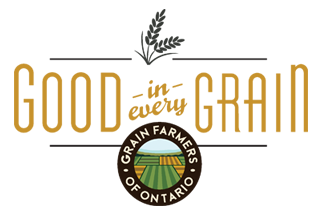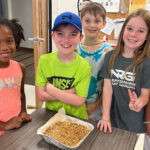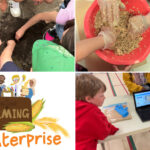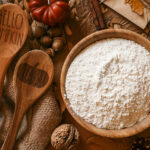Food for thought: Preparing for Nutrition Month
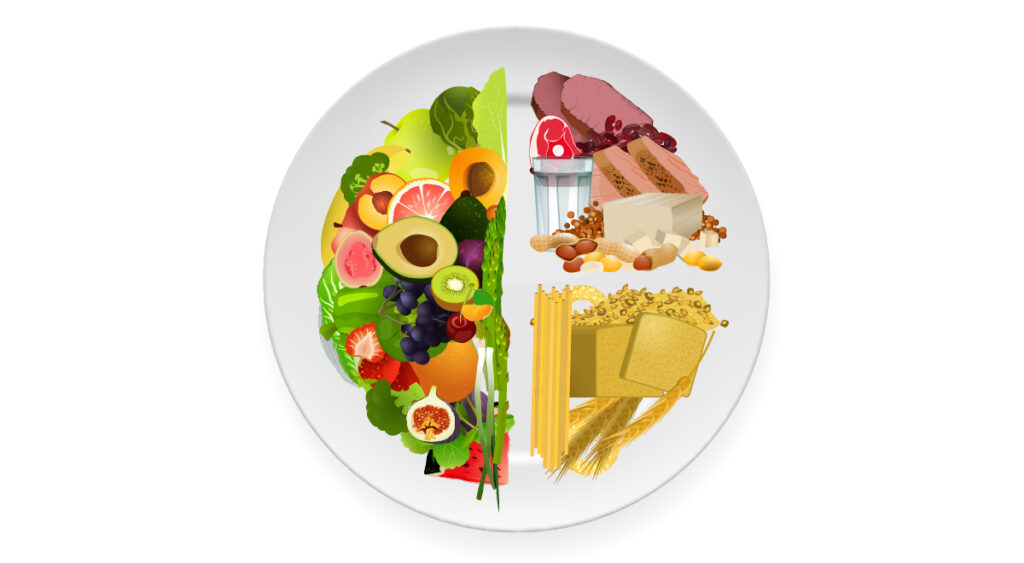
Reading time: 6.5 minutes
It’s February and we are thinking about Nutrition Month in March. It’s also the perfect time to think about food literacy and your students. As an educator, you already work with several literacies every day. Luckily for your busy schedules, food literacy does not stand alone. It has real-world associations with:
- physical and mental health
- nutrition
- agronomy
- economy
- culture and tradition
- the environment and sustainability
- STEM subjects
- Social interactions
With so many connections, it is fitting that the theme for Nutrition Month 2025 is Flourish to Nourish.
So, let’s talk about food literacy!
First—a little clarity. The Canadian Physical and Health Education Competencies define food literacy as involving “the ability to source, understand the nutritional benefits or risks, prepare and store food and to be able to maintain these skills throughout life’s up and downs. Food literacy is linked to improved diet, food habits and behaviours and the ability to manage food and maintain food security to support one’s holistic wellbeing in keeping with potential health needs as well as social and cultural dynamics.” (Davis, et al, 2023, p. 103).
Food is a complex aspect of human life. Although at its essence food is simply what nourishes us, the food environment is dynamic. Food must be understood not only in the context of what we eat, but where, with whom, and how. Its production and procurement must also be understood in terms of the environment and sustainability.
Food knowledge once involved basic, local foods that were mainly prepared in the home. Today’s food landscape is very different. Modern transportation brings us food from afar and multi-culturalism has broadened our palates. Today’s food landscape also brings us the ability to make many food choices – some healthy and some less than healthy. Social media and access to a wide array of information contributes mixed messaging about food and wellness. It’s no wonder youth often lack the food literacy they need to be healthy.
Teaching food literacy is one of today’s big topics. It increases students’ likelihood of eating nutritious food; expands their connectedness to others; helps them develop a positive sense of self; and supports their learning across a range of subjects.
And—bonus! Teaching food literacy offers opportunities to bring hands-on learning into your classroom to not only develop food-related knowledge and skills, but also to practise skills from other areas of the curriculum. In fact, food literacy is included in Ontario’s Science and Technology Curriculum for grades 1 through 8.
Good in Every Grain has resources and projects to help you develop your students’ knowledge about food and its many connections in their lives. From planting seeds to creating a new food product or steering you toward useful resources, we have you covered!
Fun and thoughtful things from Good in Every Grain
- What’s Growing ON? will help you teach your students about plants and how they grow. It’s hands-on and we even have free seed kits to get you started! Available in English and French
- Ontario Farming STEMterprise is the perfect curriculum-based program for hands-on learning about food; it helps Ontario students develop STEM skills as they learn where our food comes from. Students become entrepreneurs as the project takes them through creating, marketing, and selling a new food product.
- Regions of Ontario and Farming is a free lesson plan and activity that helps teach students about the province’s seven physiographic regions and their suitability for farming. Just download!
- In Cross-curricular baking, grade 5 teacher Andrew Arcello shares how he uses baking to teach math, science, social studies, religion, and history and how food connects us and brings people together. He even included the recipes used!
- The Healthy Respectful Lunchroom is a free program for grades 1–3 that encourages respect for food differences. It comes complete with a video, downloadable discussion guide, PowerPoint, a pledge poster, and worksheets.
- Hear from grade 2, 3, 4 teacher Michele Whaler, who is also a farmer, about expanding students’ food literacy. She says, “Teaching agriculture and food literacy has value across the curriculum. Agriculture touches on everything—health and nutrition, math, literature, science, studying the environment, career paths.” Michele includes tips and advice.
Additional Resources
- Resource alert! Food literacy for Kids 2-18 from Food and Nutrition Literacy, shared by Good in Every Grain. It provides real-life examples to enrich your lessons and engage students in critical thinking about their world.
- March is also Canadian Agriculture Literacy Month from Agriculture in the Classroom Canada. See what they offer teachers: CALM Through The Years | Canadian Agriculture Literacy Month | AITC Canada Available in English and French
- An attention-grabbing video about nutrition from Bill Nye the Science Guy that explains that we are made of food. An entertaining explanation of how food supports the body and where nutrients come from, that includes explanations and activities showing kids. It is a bit long (22:57 min), however, it could be used in part or shown in sections as the video has natural jumping off spots.
- Curriculum linked food literacy workshops for Grades 4-6 and Grades 7- 9 from Agscape. These are offered through their Teacher Ambassador Program and explores topics such as food literacy, local food, food security, food safety, food waste and even careers in agriculture and food!
- Teaching Canada’s Food Guide offers suggestions and advice for teaching many aspects of food and food knowledge and explains Canada’s Food Guide. Use it with Nutrition labelling: Overview. Available in English and French
- Engaging food literacy activities from PHE Canada, including Guess the Spice, Food Clues, Nutrition Scattegories, and more! Includes a rubric of food literacy skills for K—12/CEGEP. Available in English and French
- Focus on food literacy offers suggestions for discussions and assignments, such as reading food labels, inviting local Elders to share stories about food, creating a healthy menu, and eating together. Available in English and French
